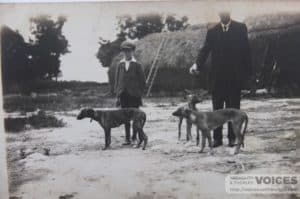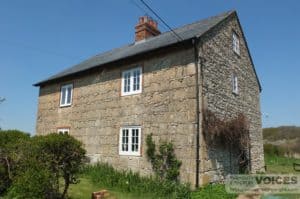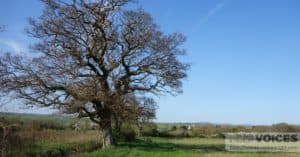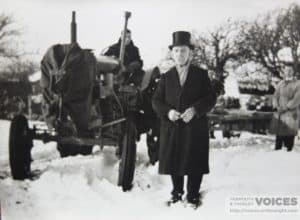The Cotton family
I moved from Yarmouth to Thorley in 1952 when I was 4yrs old and back to Yarmouth when I was 13yrs old. I moved with parents and my younger brother Peter to 3 North View Thorley, one of a row of 8 brand new council houses.
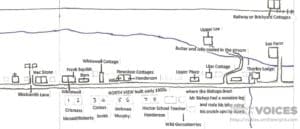
Thorley houses EAST
In No 1 were Jean and Norman Crismass with their daughters Roberta, Karen and Vanessa. I used to love to look after Vanessa when she was a baby and toddler and often carried the poor child around with me. When I was about 10 or 11 years old they had measles and I remember my mum sending me round to play with them to make sure I caught it while I was still young. Sure enough, I caught the measles, and missed a school outing to see the Royal Tournament in London!
In No 2 lived the Roberts family, and on the other side of us lived Ralph and Eileen Smith with sons Michael and Peter ( Jean came along later).
Next to them lived Mr and Mrs Jackman with daughters Ann and Sheila. Ann was older than me and had a piano accordian which she played very well. They later moved to Dog Kennel cottage up Broad Lane where the electricity was supplied by a generator and they had a stream running through their garden. They also had two geese called Jack and Jill that I was scared of.
The last house was No 8 where Sue and Cyril Henderson lived with their son Michael and daughter Mary. Sue’s parents, Fred and Amy Hillier and their son Ron lived in Newclose Cottage, a farm cottage opposite them, and this family became great friends with my family.
I always knew Mrs Hillier as ‘Hilly’. If I was off school ill and my mum was at work she would always pop in to make sure I was all right. She kept pet budgies and I remember we once had two of them ourselves as pets, a green one called Joey and a yellow sort of multi coloured one called Beauty. Hilly had one who could talk, but ours never did.
Ours was a 3 bedroom house, no central heating and a storage room for coal and coke in the back porch. We had a front room but that was only ever used on special occasions such as Easter and Christmas.
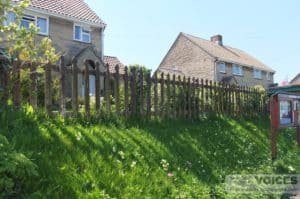
North View, Thorley
My dad was a volunteer Fireman at Yarmouth and we had a big bell in the wall in our house which clanged loudly when the fire siren went off to alert him that he was needed. He would then get on his bike and pedal as fast as he could to Yarmouth.
I remember my mum getting the boiler out every Monday morning to do the washing and then putting it through the wringer before it went out on the washing line. There was great excitement, many years later, when she acquired her first washing machine and spin drier! We had a large garden where my dad grew vegetables and gooseberries and blackcurrants. Peter and I each had our own little patch of garden. Mine had various flowers in it, such as marigolds and cornflowers; Peter’s usually had a big hole because he was digging to Australia.
There was a sloping path up to our front gate where Peter Smith (next door) and I used to race snails!
(The barn opposite our house was used to store hay and as children we sometimes played in there and I remember taking some of our cat’s food over there to “secretly” feed the stray cats who often occupied the barn although they were probably well fed on mice! Our own cat was called Sooty and at night he often slept in my bed right at the bottom and kept my feet warm. We didn’t have a cat flap and Sooty used to come in and out of the house via the front porch roof and Peter’s bedroom window.
He did this one night when my Gran came to stay and she was sleeping in that room. I will never forget all the screams and shouts when he frightened her one night by climbing in the window and jumping on her bed! Vertically next to photo of Jean)
Pam Cotton b 1948






